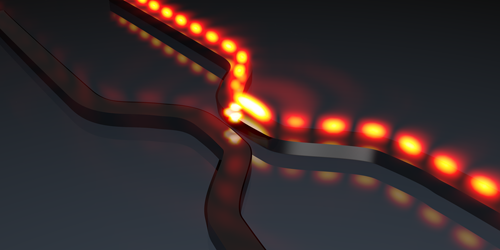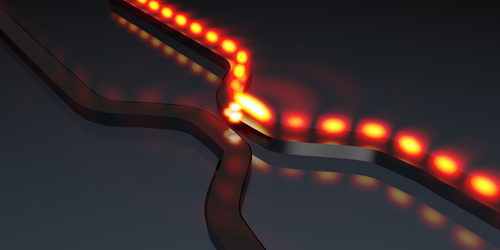Two-Face Dipole
Combinations of magnetic and electric dipoles are often used to generate directional electromagnetic emission in devices like nanoantennas or on-chip light emitters. Current approaches control directionality by separately manipulating the electric and magnetic fields generated by the dipoles. These approaches, however, ignore effects due to relative phase and amplitude differences between the electric and magnetic fields. Michela Picardi and colleagues at King’s College London have proposed a new type of dipole source that can control these differences. The scheme could lead to a broad array of photonic devices such as nanorouters and polarimeters.
By taking the phase and amplitude of both electric and magnetic fields into account, the researchers developed a general theoretical framework that describes the emission of an ensemble of dipoles as well as all possible ways to couple the dipoles’ emission into a waveguide. Such a framework allowed them to introduce the Janus-dipole source, consisting of two perpendicularly oriented electric and magnetic dipoles oscillating with a phase difference. The source, like its namesake Roman god Janus, has two faces. One face can excite electromagnetic waves in a nearby waveguide, while the second cannot. The authors suggest that a Janus dipole could be realized using a single nanoparticle that can be simultaneously polarized magnetically and electrically.
Using numerical simulations, the team analyzed a scheme in which the Janus dipole sits between two parallel waveguides. They showed that one could select which of the waveguides carries the emitted signal by switching the orientation of the dipole’s two faces. This switching could be achieved by changing the polarization or wavelength of a laser beam shined on the nanoparticle.
This research is published in Physical Review Letters.
–Christopher Crockett
Christopher Crockett is a freelance writer based in Montgomery, Alabama.





